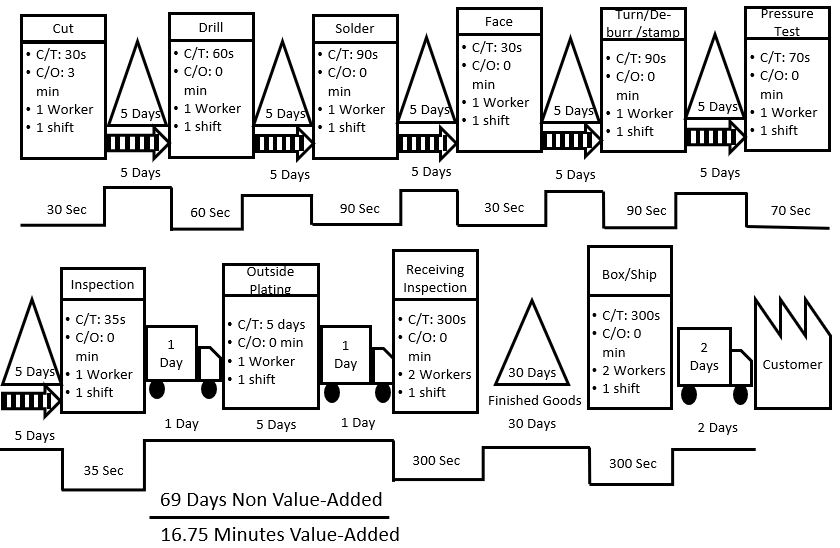There are wastes everywhere in your business. Going to operations and conducting a waste walk will help you identify opportunities for improvement!
One of the techniques to understand where opportunities lie in eliminating waste is to develop a Value Stream Map of the enterprise. This is called an EVSM or Enterprise Value Stream Map.
Once this is completed, you can develop smaller Value Stream Maps (VSM) that show waste within a particular department if necessary.

After the value stream map is completed it is a best practice to take the map (or a picture of it) and walk it backward through the processes. Why do you think you want to do that? One reason is to identify any skipped or missing steps.
A second reason is to look for waste and interview employees in the process to see if they have waste ideas. Let’s talk about conducting a waste walk successfully.
1. Walk the process backward
As I mentioned above it is best practice to walk your Value Stream Map backward once you have completed it. This breaks up your thinking and ensures that you don’t miss any steps.
If I asked you to say the alphabet, it may take you a few seconds. If I ask you to say the alphabet backward, it will take you a lot longer. You have to stop and think about what comes before z, etc. Walking the VSM backward makes you think about the previous process.
2. Take notes on the waste walk
Have everyone part of the VSM team take a notepad with them as you walk the VSM backward. Look for items such as inventory, WIP, number of employees, scrap pieces, travel distances, batch sizes, and any rework that you observe. Make a note of these items. Consider any equipment downtime you see. Make a note of setup times and computer program switching times.
3. Interview team members
Some of the items listed above, you will be able to see. Pieces on the floor, WIP, travel distance. Other items will not be so evident. You need to ask employees in the process some questions.
How long does a changeover take? What and how many systems do you use on the computer? How long does it take to switch back and forth? What frustrations do you face every day?
4. Use a DOWNTIME chart to identify waste
When you get back to the room where you are developing your VSM, have team members write sticky notes of the waste they observed. Have them place the sticky notes in the category they think the waste belongs to on a DOWNTIME chart.
Don’t worry about perfectly identifying the category, focus on capturing the waste idea. Since you are using sticky notes, you can easily move them around.

5. Brainstorm ways to eliminate the waste
The whole purpose of a VSM and a waste walk is to identify waste opportunities you can work to eliminate. After identifying waste, brainstorm ways to eliminate it. Use different colored sticky notes to come up with ideas. Remember the rules of brainstorming- there are no bad ideas. In this example, the waste elimination ideas are in green.
The eight wastes are everywhere in your business. Take a walk with some employees and take notes. Identity the wastes and put them on a DOWNTIME chart like the one above. Then go attack that waste!
As always, it is an honor to serve you and I hope that you and your company are getting better every day!
Follow me on Twitter@dailyleancoach.com
Join me on LinkedIn
Listen to the podcast here
